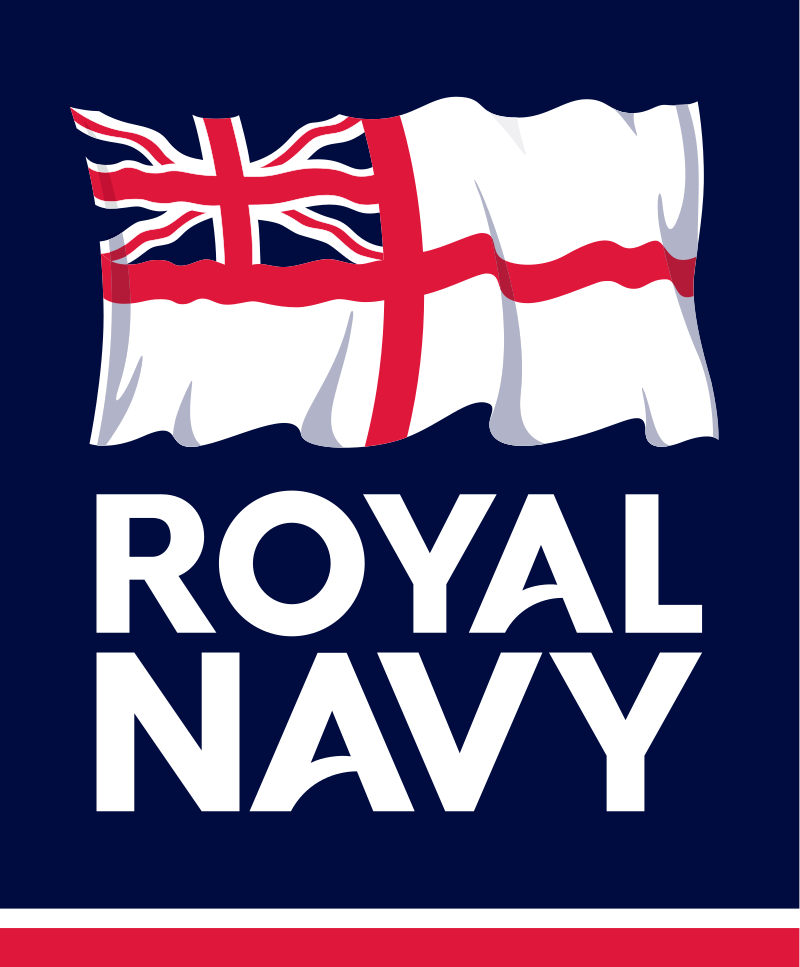
ROYAL
NAVY - The British navy Union Jack logo
BRITISH
ROYAL NAVY
The Royal Navy (RN) is the United Kingdom's naval warfare force and a component of His Majesty's Naval Service. Although warships were used by English and Scottish kings from the early medieval period, the first major maritime engagements were fought in the Hundred Years' War against France. The modern
British
Royal Navy traces its origins to the early 16th century; the oldest of the UK's armed services, it is consequently known as the Senior Service.
From the middle decades of the 17th century, and through the 18th century, the Royal Navy vied with the Dutch Navy and later with the French Navy for maritime supremacy. From the mid-18th century until the Second World War, it was the world's most powerful navy. The Royal Navy played a key part in establishing and defending the
British
Empire, and four Imperial fortress colonies and a string of imperial bases and coaling stations secured the Royal Navy's ability to assert naval superiority globally. Owing to this historical prominence, it is common, even among non-Britons, to refer to it as "the Royal Navy" without qualification. Following World War I, it was significantly reduced in size, although at the onset of
World War II it was still the world's largest. During the Cold War, the Royal Navy transformed into a primarily anti-submarine force, hunting for Soviet submarines and mostly active in the GIUK gap. Following the collapse of the Soviet Union, its focus has returned to expeditionary operations around the world and it remains one of the world's foremost blue-water navies.
The Royal Navy maintains a fleet of technologically sophisticated ships, submarines, and aircraft, including 2 aircraft carriers, 2 amphibious transport docks, 4 ballistic missile submarines (which maintain the nuclear deterrent), 6 nuclear fleet submarines, 6 guided missile destroyers, 11 frigates, 9 mine-countermeasure vessels and 26 patrol vessels. As of April 2023, there are 70 operational commissioned ships (including submarines as well as one historic ship,
HMS
Victory) in the Royal Navy, plus 13 ships of the Royal Fleet Auxiliary (RFA); there are also five Merchant Navy ships available to the RFA under a private finance initiative. The RFA replenishes Royal Navy warships at sea, and augments the Royal Navy's
amphibious warfare capabilities through its three Bay-class landing ship vessels. It also works as a force multiplier for the Royal Navy, often doing patrols that frigates used to do.
The Royal Navy is part of His Majesty's Naval Service, which also includes the Royal Marines and the Royal Fleet Auxiliary. The professional head of the Naval Service is the First Sea Lord who is an admiral and member of the Defence Council of the United Kingdom. The Defence Council delegates management of the Naval Service to the Admiralty Board, chaired by the Secretary of State for Defence. The Royal Navy operates from three bases in Britain where commissioned ships and submarines are based: Portsmouth, Clyde and Devonport, the last being the largest operational naval base in Western Europe, as well as two naval air stations, RNAS Yeovilton and RNAS Culdrose where maritime aircraft are based.
WORLD WAR I
During World War
I, the Royal Navy's strength was mostly deployed at home in the Grand Fleet, confronting the German High Seas Fleet across the
North
Sea. Several inconclusive clashes took place between them, chiefly the Battle of Jutland in 1916. The British fighting advantage proved insurmountable, leading the High Seas Fleet to abandon any attempt to challenge British dominance. The Royal Navy under John Jellicoe also tried to avoid combat and remained in port at Scapa Flow for much of the war. This was contrary to widespread prewar expectations that in the event of a Continental conflict Britain would primarily provide naval support to the Entente Powers while sending at most only a small ground army. Nevertheless, the Royal Navy played an important role in securing the British Isles and the
English
Channel, notably ferrying the entire British Expeditionary Force to the Western Front without the loss of a single life at the beginning of the war.
The Royal Navy nevertheless remained active in other theatres, most notably in the
Mediterranean
Sea, where they waged the Dardanelles and Gallipoli campaigns in 1914 and 1915. British cruisers hunted down German commerce raiders across the world's oceans in 1914 and 1915, including the battles of Coronel, Falklands Islands, Cocos, and Rufiji Delta, among others.
POST WORLD WAR I
At the end of World War I, the Royal Navy remained by far the world's most powerful navy, larger than the U.S. Navy and
French Navy combined, and over twice as large as the
Imperial Japanese Navy and
Royal Italian Navy combined. Its former primary competitor, the Imperial German Navy, was destroyed at the end of the
war. In the inter-war period, the Royal Navy was stripped of much of its power. The Washington and London Naval Treaties imposed the scrapping of some capital ships and limitations on new construction.
The lack of an imperial fortress in the region of Asia, the Indian
Ocean, and the Pacific Ocean was always to be a weakness throughout the 19th century as the former North American colonies that had become the United States of America had multiplied towards the Pacific Coast of North America, and the Russian Empire and Japanese Empire both had ports on the Pacific and had begun building large, modern fleets which went to war with each other in 1904. Britain reliance on Malta, via the Suez Canal, as the nearest Imperial fortress was improved, relying on amity and common interests that developed between Britain and the United States during and after World War I, by the completion of the
Panama Canal in 1914, allowing the cruisers based in Bermuda to more easily and rapidly reach the eastern Pacific Ocean (after the war, the Royal Navy's Bermuda-based North America and
West Indies Station was consequently re-designated the America and West Indies station, including a South American division. The rising power and increasing belligerence of the Japanese Empire after World War I, however, resulted in the construction of the Singapore Naval Base, which was completed in 1938, less than four years before hostilities with Japan did commence during
World War
II.
In 1932, the Invergordon Mutiny took place in the Atlantic Fleet over the National Government's proposed 25% pay cut, which was eventually reduced to 10%. International tensions increased in the mid-1930s and the re-armament of the Royal Navy was well under way by 1938. In addition to new construction, several existing old battleships, battlecruisers and heavy cruisers were reconstructed, and anti-aircraft weaponry reinforced, while new technologies, such as ASDIC, Huff-Duff and hydrophones, were developed.
WORLD WAR II
At the start of World War II in 1939, the Royal Navy was still the largest in the world, with over 1,400 vessels. The Royal Navy provided critical cover during Operation Dynamo, the British evacuations from
Dunkirk, and as the ultimate deterrent to a German invasion of Britain during the following four months. The Luftwaffe under Hermann Göring attempted to gain air supremacy over southern England in the Battle of Britain in order to neutralise the Home Fleet, but faced stiff resistance from the
Royal Air
Force. The Luftwaffe bombing offensive during the Kanalkampf phase of the battle targeted naval convoys and bases in order to lure large concentrations of RAF fighters into attrition warfare. At Taranto, Admiral Cunningham commanded a fleet that launched the first all-aircraft naval attack in history. The Royal Navy suffered heavy losses in the first two years of the war. Over 3,000 people were lost when the converted troopship Lancastria was sunk in June 1940, the greatest maritime disaster in Britain's history. The Navy's most critical struggle was the Battle of the Atlantic defending Britain's vital North American commercial supply lines against
U-boat attack. A traditional convoy system was instituted from the start of the war, but German submarine tactics, based on group attacks by "wolf-packs", were much more effective than in the previous war, and the threat remained serious for well over three years.
COLD WAR
After World War II, the decline of the British Empire and the economic hardships in Britain forced the reduction in the size and capability of the Royal Navy.
The United States Navy instead took on the role of global naval power. Governments since have faced increasing budgetary pressures, partly due to the increasing cost of weapons systems.
In 1981, Defence Secretary John Nott had advocated and initiated a series of cutbacks to the Navy. The Falklands War however proved a need for the Royal Navy to regain an expeditionary and littoral capability which, with its resources and structure at the time, would prove difficult. At the beginning of the 1980s, the Royal Navy was a force focused on blue-water anti-submarine warfare. Its purpose was to search for and destroy
Soviet submarines in the North
Atlantic, and to operate the nuclear deterrent submarine force. The navy received its first nuclear weapons with the introduction of the first of the Resolution-class submarines armed with the Polaris
missile.
POST-COLD WAR
Following the conclusion of the collapse of the Soviet Union and the end of the
Cold War in 1991, the Royal Navy began to experience a gradual decline in its fleet size in accordance with the changed strategic environment it operated in. While new and more capable ships are continually brought into service, such as the
Queen Elizabeth-class aircraft
carriers, Astute-class
submarines, and Type 45 destroyers, the total number of ships and submarines operated has continued to steadily reduce. This has caused considerable debate about the size of the Royal Navy. A 2013 report found that the Royal Navy was already too small, and that Britain would have to depend on her allies if her territories were attacked.
The financial costs attached to nuclear deterrence, including Trident missile upgrades and replacements, have become an increasingly significant issue for the navy.
THE
NAVY DEPARTMENT
The Navy Department was a former ministerial service department of the British Ministry of Defence responsible for the control and direction of His Majesty's Naval Service. It was established on 1 April 1964 when the Admiralty was absorbed into a unified Ministry of Defence, where it became the Navy Department. Political oversight of the department originally lay with the Minister of Defence for the Royal Navy (1964-1967) it then passed to the Parliamentary Under-Secretary of State for Defence for the Royal Navy (1967–1981), then later to the Parliamentary Under-Secretary of State for the Armed Forces (1981-1990), and finally the Parliamentary Under-Secretary of State for Defence (1991–1997).
The departments military head was the First Sea Lord and Chief of Naval Staff, (1964–1997) who was responsible for the day to day superintendence of the department. Following restructuring in 1997 the Navy Department as a ministerial department of the Ministry of Defence was abolished and following restructuring within the MOD the previous department became an operational grouping Ministry of Defence (Royal Navy) later called Ministry of Defence (Navy).

The Armed
Forces insignia
In 1959 the newly appointed Chief of the Defence Staff Louis Mountbatten implemented major changes with regards to defence policy one of which was the proposal to abolish the three existing service ministries the Admiralty, Air Ministry, War Office and recommended their staff and functions be absorbed into a new but enlarged
Ministry of
Defence, as separate Air, Army and Navy Departments but under the control of the new Defence Council and administered by the Defence Board (committee) and Defence Secretariat. On 1 April 1964 the Admiralty was absorbed in the unified Ministry of Defence, where it became the Navy Department.
The new unified ministry marked the start of a period which saw increasing pressure to improve efficiency and increase the effectiveness of the administrative functions of the Armed Forces and the Ministry of Defence. It was mostly organised on a joint rather than an 'integrated' or 'functional' basis in that sections of the Naval, Army and Air Staffs with similar responsibilities remained separate within their own departments, but were brought together in joint committees. The new organisation included three ministers of state who headed and implemented policy within the Navy, Army and Air Departments. The Minister of Defence for the Royal Navy (1964-1967) had responsibilities across the whole of the defence field for international policy, personnel and logistics, and research development and production, although they did not have executive responsibilities that remained with the Secretary of State for Defence. The Minister of State for the Royal Navy was assisted by a Parliamentary Under-Secretary of State for Defence for the Royal Navy (1964–1981) and a civil servant the Second Permanent Under-Secretary for the
Royal Navy.
In 1967 saw a re-organisation of the ministry aimed at moving towards a functional rather than service based structure. The three single service ministerial posts were replaced by two functional ministerial positions: Minister of Defence (Administration) (1967–1970) responsible for managing personnel and logistics for the entire defence establishment. He was assisted by Chief Adviser, Personnel and Logistics. Minister of Defence (Equipment) (1967–1970) responsible for managing research, development, production, procurement and sales. He was assisted by Chief Adviser (Projects), formerly the Chief Scientific Adviser. The positions of Head of Defence Sales and Deputy Under Secretary of State (Equipment) were created to assist the Minister of Defence (Equipment) in general questions of research and development, procurement and production and sales.
The three single service departments, second permanent under secretaries were replaced by two functional second permanent under secretaries, for administration and equipment, and ministerial responsibility for the single service departments was delegated to the parliamentary under secretaries of state. The Navy Department was then brought under the control of the Parliamentary
Under-Secretary of State for Defence for the Royal
Navy. During the previous six years there had been a shift to a more centralised Ministry of Defence and gradually moving accountability away from the single service departments. In 1970 the Heath ministry moved to reverse this trend through the appointment of three single service Parliamentary Under Secretaries of State appointed under one minister of state the Minister of State for Defence (1970–1981).
In May 1981 the office of the Minister of State for Defence was separated and his previous procurement responsibilities led to the creation of a new Minister of Defence Procurement whilst his former logistical responsibilities were handed over to a new Minister of State for the Armed Forces. At the same time the Under-Secretaries of State for the Army and Royal Air Force together with the Parliamentary Under-Secretary of State for Defence for the Royal Navy were unified into a single post of Parliamentary Under-Secretary of State for the Armed Forces who now had overall responsibility for the three service departments and in 1990 his title was changed to Parliamentary Under-Secretary of State for Defence. In January 1997 the Navy Department as a service department with ministerial oversight ended and integrated into a new operating structure as an organisational grouping "Ministry of Defence (Royal Navy)", along with "Ministry of Defence, (Army)", "Ministry of Defence, (Airforce)", and "Ministry of Defence, (Staffs)". In 2005 the grouping "MOD (Royal Navy)" was changed to "MOD (Navy)".
During this period of transition the majority of directorates from the previous department remained under supervision of the First Sea Lord whilst others were distributed under the Defence Staff) (1964–1995) that was later given a new organisational grouping name the "Central Staffs" (1996–2005) In 2006 greater accountability and control over budgets, equipment and staffing led to the formation new organisational groups, Central Staffs became Central Top Level Budget (CTLB) whilst Ministry of Defence (Navy) was renamed Fleet Top Level Budget. A Top Level Budget (TLB) is a major organisational group of the MOD. In 2010 Fleet Top Level Budget was renamed Navy Command following the merger of the Commander-in-Chief Fleet and the Commander-in-Chief, Naval Home Command (Royal Navy). Navy Command is currently the Top Level Budget (holder) for the Royal Navy.
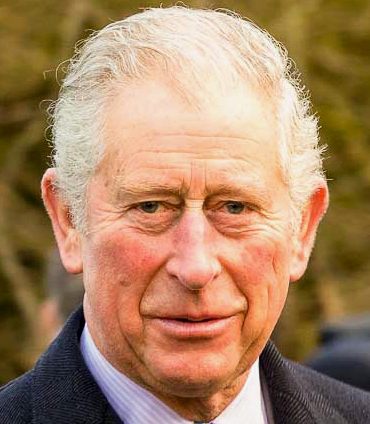
KING
CHARLES III
THE
ADMIRALTY
The Admiralty was a department of the Government of the United Kingdom responsible for the command of the Royal Navy until 1964, historically under its titular head, the Lord High Admiral – one of the Great Officers of State. For much of its history, from the early 18th century until its abolition, the role of the Lord High Admiral was almost invariably put "in commission" and exercised by the Lords Commissioner of the Admiralty, who sat on the governing Board of Admiralty, rather than by a single person. The Admiralty was replaced by the Admiralty Board in 1964, as part of the reforms that created the Ministry of Defence and its Navy Department (later Navy Command).
Before the Acts of Union 1707, the Office of the Admiralty and Marine Affairs administered the Royal Navy of the Kingdom of England, which merged with the Royal Scots Navy and the absorbed the responsibilities of the Lord High Admiral of the Kingdom of Scotland with the unification of the Kingdom of Great Britain. The Admiralty was among the most important departments of the British Government, because of the Royal Navy's role in the expansion and maintenance of the English overseas possessions in the 17th century, the British Empire in the 18th century, and subsequently.
The modern Admiralty Board, to which the functions of the Admiralty were transferred in 1964, is a committee of the tri-service Defence Council of the United Kingdom. This Admiralty Board meets only twice a year, and the day-to-day running of the Royal Navy is controlled by a Navy Board (not to be confused with the historic Navy Board). It is common for the various authorities now in charge of the Royal Navy to be referred to as simply 'The Admiralty'.
The title of Lord High Admiral of the United Kingdom was vested in the monarch from 1964 to 2011. The title was awarded to Prince Philip, Duke of Edinburgh by
Queen Elizabeth II on his 90th birthday and since his 2021 death has reverted to the monarch. There also continues to be a Vice-Admiral of the United Kingdom and a Rear-Admiral of the United Kingdom, both of which are honorary offices.

The
Argentinean expedition base camp on Deception Island

Remains
of the whaling operation, where blubber was rendered into oil for lamps
SPECIAL BOAT SERVICE
The Special Boat Service (SBS) is the special forces unit of the United Kingdom's Royal Navy. The SBS can trace its origins back to the Second World War when the Army Special Boat Section was formed in 1940. After the Second World War, the Royal Navy formed special forces with several name
changes - Special Boat Company was adopted in 1951 and re-designated as the Special Boat Squadron in
1974 - until on 28 July 1987 when the unit was renamed as the Special Boat Service after assuming responsibility for maritime counter-terrorism. Most of the operations conducted by the SBS are highly classified, and are rarely commented on by the British government or the Ministry of Defence, owing to their sensitive nature.
The Special Boat Service is the maritime special forces unit of the United Kingdom Special Forces and is described as the sister unit of the British Army 22 Special Air Service Regiment (22 SAS), with both under the operational control of the Director Special Forces. In October 2001, full command of the SBS was transferred from the Commandant General Royal Marines to the Commander-in-Chief Fleet. On 18 November 2003, the SBS were given their own cap badge with the motto "By Strength and Guile". The SBS has traditionally been staffed mostly by Royal Marines Commandos.
The principal roles of the SBS are Surveillance and Reconnaissance (SR), including information reporting and target acquisition; Offensive Action (OA), including the direction of air strikes, artillery and naval gunfire, designation for precision guided munitions, use of integral weapons and demolitions; and Support and Influence (SI), including overseas training tasks. The SBS also provide immediate response Military Counter Terrorism (CT) and Maritime Counter Terrorism (MCT) teams.
The operational capabilities of the SBS and the SAS are broadly similar. However, the SBS (being the principal Royal Navy contribution to UKSF) has the additional training and equipment required to lead in the maritime, amphibious and riverine environments. Both units come under the operational command of HQ Directorate of Special Forces (DSF) and undergo an identical selection process.
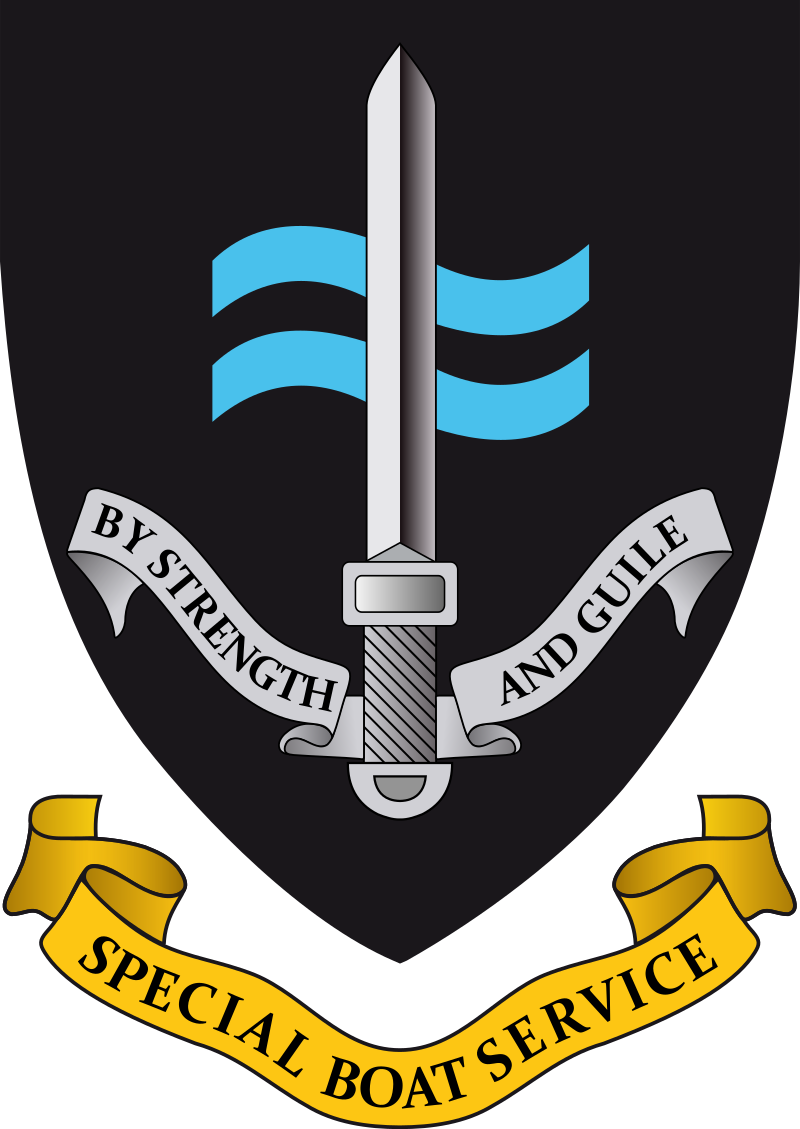
Special
Boat Service mottoL By strength and guile
SBS HISTORY
Roger Courtney became a commando in mid-1940 and was sent to the Combined Training Centre in Scotland. He was unsuccessful in his initial attempts to convince Admiral of the Fleet Sir Roger Keyes and later Admiral Theodore Hallett, commander of the Combined Training Centre, that his idea of a folding kayak brigade would be effective. He decided to infiltrate HMS Glengyle, an infantry landing ship anchored in the River Clyde. Courtney paddled to the ship, climbed aboard undetected, wrote his initials on the door to the captain's cabin, and stole a deck gun cover. He presented the soaking cover to a group of high-ranking Royal Navy officers meeting at a nearby Inveraray hotel. He was promoted to captain and given command of twelve men as the first Special Boat Service/Special Boat Section.
The unit, on the shores of Sannox, Isle of Arran, was initially named the Folboat Troop, after the type of folding canoe employed in raiding operations and then renamed No. 1 Special Boat Section in early 1941. One training exercise required SBS members to navigate folboats 140 miles (230 km) over 3 days and 3 nights from Ardrossan to Clachan, via the Isle of Kerrera, where they reconnoitred and sketched RAF Oban. Attached to Layforce, it moved to the Middle East. The unit worked with the 1st Submarine Flotilla based at Alexandria and did beach reconnaissance of Rhodes, evacuated troops left behind on Crete, and carried out a number of small-scale raids and other operations. In December 1941 Courtney returned to the United Kingdom where he formed No2 SBS, and No1 SBS became attached to the Special Air Service (SAS) as the Folboat Section. In June 1942 they took part in the Crete airfield raids. In September 1942 eight men of the SBS carried out Operation Anglo, a raid on two airfields on the island of Rhodes; all but two of the men were captured after carrying out their mission. Destroying three aircraft, a fuel dump and numerous buildings, the two uncaptured SBS men had to hide in the countryside for four days before they could reach the waiting submarine. After the Rhodes raid, the SBS was absorbed into the SAS due to the heavy casualties they had suffered.
The Royal Marines Boom Patrol Detachment (RMBPD) was formed on 6 July 1942, and based at Southsea, Portsmouth. The RMBPD was under the command of Royal Marines Major Herbert 'Blondie' Hasler with Captain J. D. Stewart as second in command. The detachment consisted of 34 men and was based at Lumps Fort, and often exercised in the Portsmouth Harbour and patrolled the harbour boom at nights.
In April 1943, 1st SAS was divided, with 250 men from the SAS joining the Small Scale Raiding Force to form the Special Boat Squadron under the command of Major the Earl Jellicoe. They moved to Haifa and trained with the Greek Sacred Regiment for operations in the Aegean.
They later operated among the Dodecanese and Cyclades groups of islands in the Dodecanese Campaign and took part in the Battle of Leros and the Battle of Kos. They, with the Greek Sacred Band, took part in the successful Raid on Symi in July 1944 in which the entire German garrison was either killed or captured. In August 1944 they joined with the Long Range Desert Group in operations in the Adriatic, on the Peloponnese, in Albania, and, finally, in Istria. So effective were they that, by 1944, the 200–300 men of the SBS were holding down six German divisions.
Throughout the war, No.2 SBS did not use the Special Boat Squadron name but instead retained the name Special Boat Section. They accompanied US Major General Mark Clark ashore before the Operation Torch landings in October 1942 on Operation Flagpole. Later, one group, Z SBS, which was based in Algiers from March 1943, carried out the beach reconnaissance for the Salerno landings and a raid on Crete, before moving to Ceylon to work with the Special Operations Executives, Force 136 and later with Special Operations Australia. The rest of No. 2 SBS became part of South-East Asia Command's Small Operations Group, operating on the Chindwin and Irrawaddy rivers, and in the Arakan, during the Burma campaign.
Although their roles always overlapped to some extent, the various canoe and boat units became more specialised from late 1942 onwards. The RMBPD focused on ship attack and harbour sabotage, the Special Boat Section and COPP undertook covert beach surveys, and the Special Boat Squadron engaged in raiding, sabotage and reconnaissance above the high-water mark.
Post-war era
In 1946, the SBS, whether of Commando or SAS parentage, was disbanded. The RMBPD was the only British Special Forces unit to survive the end of World War II intact, and one of three Special Service units to survive (the other two being the RM Commandos and the Parachute Regiment). In 1946, the RMBPD became the School of Combined Operations Beach and Boat Section (SCOBBS) at Fremington, Devon. Lt-Col "Blondie" Hasler RM became the adviser to SCOBBS and wrote the pamphlet "General Notes on the Use of Special Parties". The basic SCOBBS course of fourteen weeks covered the range of skills of the wartime COPPS, SRU, SBS and Detachment 385. In October 1947 SCOBBS dropped the word School from its name and moved to RM Eastney to become the Small Raids Wing (SRW) of the Amphibious School, Royal Marines. The school's Chief Instructor Norman Tailyour established the Royal Marines Special Boat Sections taking on the roles proposed in Hasler's paper. Their first missions were in Palestine, involving ordnance removal, and limpet mine removal from ships in
Haifa. The SBS went on to serve in the Korean War deployed on operations along the North Korean coast as well as operating behind enemy lines destroying lines of communication, installations and gathering intelligence. During the Korean War the SBS operated from submarines like their wartime predecessors.
In the early 1950s, NATO
(North
Atlantic Treaty Organization) doctrine for the defence of Western Europe called for a rapid fall-back to the west bank of the Rhine River, a natural defensive barrier. Royal Navy Rhine Flotilla’s SBS detachment had the task of demolishing the bridges over the river as well as destroying the many river barges on the river. The SBS teams of a radio operator and two SBS swimmer-canoeists would then stay behind on the eastern side of the river providing reconnaissance and intelligence and to sabotage Warsaw Pact forces logistics. 2 SB Section, and later also the newly formed 3 SB Section, were part of the Rhine Squadron until around 1958 and took part in all major British Army of the Rhine (BAOR) exercises when they would be joined by 4 and 5 SB Section, formed from the Royal Marines Reserve.
In 1952, SBS teams were held at combat readiness in Egypt in case Gamal Abdel Nasser's revolution turned more violent than it did. The SBS were also alerted during the Suez Crisis of 1956 and coup against King Idris I of Libya (1959), but in both cases they did not see action. In 1961, SBS teams carried out reconnaissance missions during the Indonesian Confrontation (see Operation Claret). In the same year, Iraq threatened to invade Kuwait for the first time, and the SBS put a detachment at Bahrain. In 1972, the SBS came into prominence when members of a combined SBS and RAOC team parachuted into the Atlantic Ocean after a bomb threat on board the cruise liner Queen Elizabeth 2. A thorough search of the ship found no evidence of any device drawing the conclusion that it was a hoax. The SBS conducted operations in Northern Ireland during The Troubles including with submarines. In January 1975, two SBS kayak teams were inserted from HMS Cachalot to conduct an anti gun running operation in the area between Torr Head and Garron.
Special Boat Squadron
In 1973, their name was changed to the Special Boat Squadron and in 1980 the SBS relinquished
North Sea oil rig protection to Comacchio Company, Royal Marines. In 1982, after the Argentinian invasion of the Falkland Islands, they deployed to South Georgia. The only losses to the SBS during the Falklands War occurred when the SBS and SAS were operating behind the lines and two members of the SBS were shot, one fatally, by an SAS patrol, who had mistaken them for Argentinians.
Special Boat Service
In 1987, they were renamed Special Boat Service, and became part of the United Kingdom Special Forces Group alongside the Special Air Service and 14 Intelligence Company. In the Gulf War, there was no amphibious role assigned to the SBS. An "area of operations line" was drawn down the middle of Iraq; the SAS would operate west of the line and the SBS to the east. As well as searching for mobile Scud missile launchers, the SBS's assigned area contained a mass of fibre-optic cable that provided Iraq with intelligence; the location of the main junction of the network was 32 miles from Baghdad. On 22 January 1991, 36 SBS members were inserted by two Chinook helicopters from No. 7 Squadron RAF into an area full of Iraqi ground and air forces as well as spies and nomads. The SBS team managed to avoid these and destroyed a 40-yard section of the cable with explosives, neutralising what was left of the Iraqi communication grid. The SBS also carried out one of its most high-profile operations when it liberated the British Embassy in Kuwait, abseiling from helicopters hovering above the embassy. They also carried out diversionary raids along the Kuwaiti coast which diverted a number of Iraqi troops away from the main thrust of the coalition buildup, to the SBS area of operations.
In September 1999, about 20 SBS members contributed to the Australian-led International Force for East Timor (INTERFET) in East Timor. Together with the Australian Special Air Service Regiment and the New Zealand Special Air Service they formed INTERFET's special forces element, named Response Force. Response Force departed from Darwin by C-130 Hercules transport aircraft and flew into Dili tasked with securing the airport, a seaport and a heli-port to enable regular forces to land and deploy. The SBS were filmed driving a Land Rover Defender out of a Hercules. Response Force was then used to perform a variety of tasks including direct action and special reconnaissance throughout East Timor. The British forces, including the SBS, withdrew in December 1999. Sergeant Mark Andrew Cox was awarded the Military Cross after his patrol came under fire from pro-Indonesian militia.
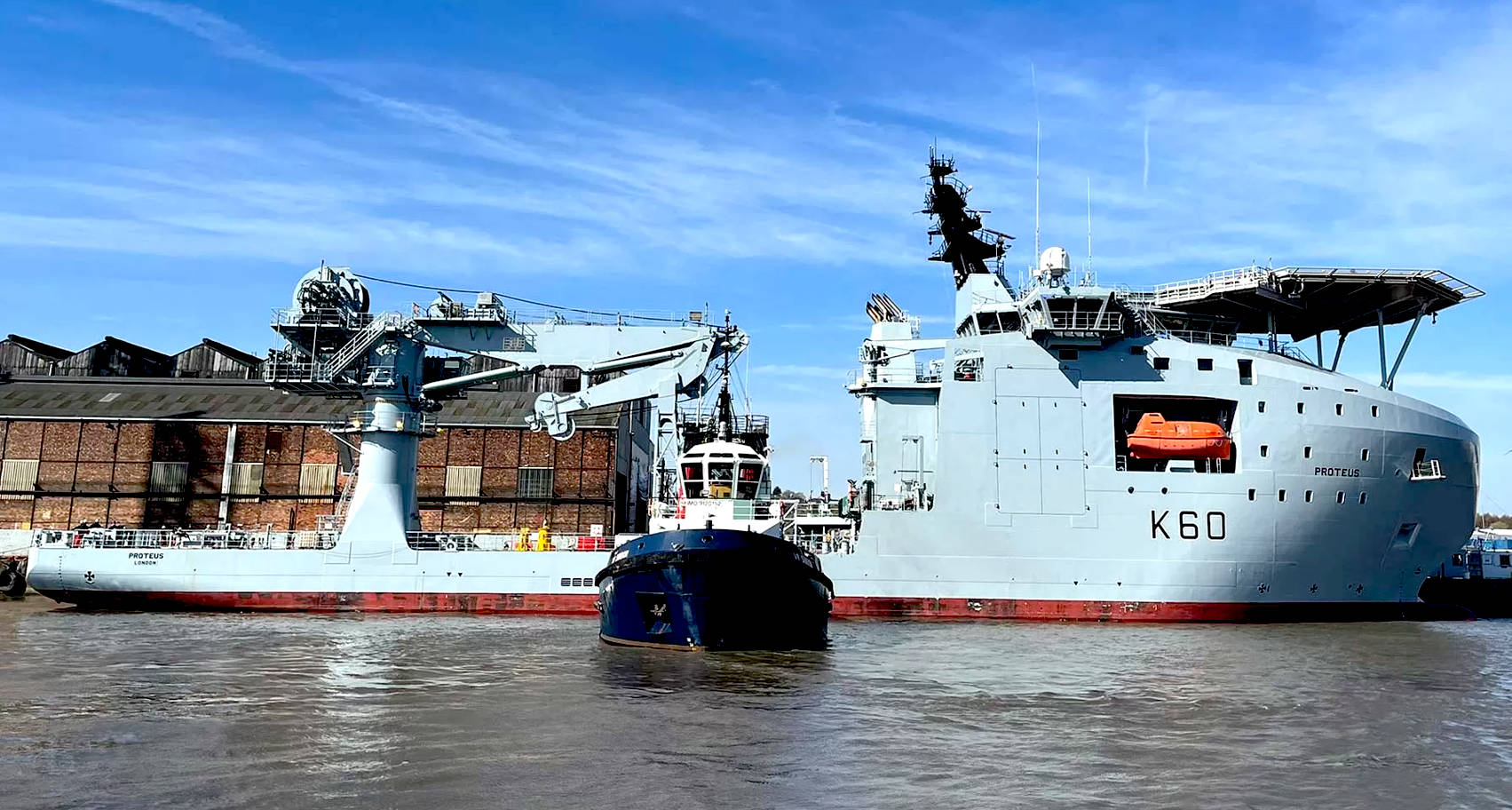
HMS
Proteus, British Antarctic survey ship
SURVEY
SHIPS - BRITISH ANTARCTIC (BAS)
HMS Protector is a dedicated Antarctica patrol ship that fulfils the nation's mandate to provide support to the British Antarctic Survey (BAS). HMS Scott is an ocean survey vessel and at 13,500 tonnes is one of the largest ships in the Navy. As of 2018, the newly commissioned HMS Magpie also undertakes survey duties at sea. The Royal Fleet Auxiliary plans to introduce two new Multi-Role Ocean Surveillance Ships, in part to protect undersea cables and gas pipelines and partly to compensate for the withdrawal of all ocean-going survey vessels from Royal Navy service. The first of these vessels, RFA Proteus, entered service in October 2023.
RFA PROTEUS
RFA Proteus is a ship of the Royal Fleet Auxiliary within His Majesty's Naval Service of the United Kingdom. Acquired in 2023, the ship entered drydock at Cammell Laird for modification into a Multi-Role Ocean Surveillance Ship (MROSS). She formally entered service in October 2023.
The ship was formerly named MV Topaz Tangaroa in 2017–2022, and was used as a platform supply vessel operated by P&O Maritime Logistics. The vessel is in a shipyard being refitted as of May 2023, after being sold to the U.K. Ministry of Defence in January 2023.
MV Topaz Tangaroa - The ship operated as the offshore support vessel MV Topaz Tangaroa for Topaz Marine (later, P&O Maritime Logistics) from December 2019 until January 2023. Designed and built by Vard Brattvaag, Norway and with the hull construction completed in Tulcea shipyard,
Romania the primary capabilities of Topaz Tangaroa were to support subsea construction and installation projects, subsea inspection and survey, and as a mother ship to support remotely operated vehicle (ROV) operations. The ship was flagged in the Marshall Islands with its home port as Majuro.
Owing to the UK's government's growing concern about protecting subsea infrastructure, and the 2022 Russian invasion of Ukraine, Topaz Tangaroa was purchased by the UK's Ministry of Defence in February 2023 for £70 million to be converted into a multi-role ocean surveillance (MROS) ship operated by the Royal Fleet Auxiliary. The ship was assigned the pennant number K60. Initial conversion for naval service is being conducted at the Cammell Laird shipyard in Birkenhead, UK.
The MROS was initially announced by the Defence Secretary Ben Wallace during the 2022 Conservative Party conference. Then-Prime Minister Boris Johnson had first discussed the possibility of such a vessel in November 2020.
She is equipped with a 120-tonne crane as well as a hangar and workshops capable of accommodating remotely operated and other unmanned underwater vehicles (UUVs). The Ministry of Defence reportedly acquired three Kongsberg HUGIN Large UUVs which reportedly can conduct surveillance and surveys down to depths of 6,000 metres (20,000 ft).
Conversion of Proteus was completed in September 2023 and the ship began post-conversion sea trials. She formally entered service with the Royal Fleet Auxiliary in October 2023.
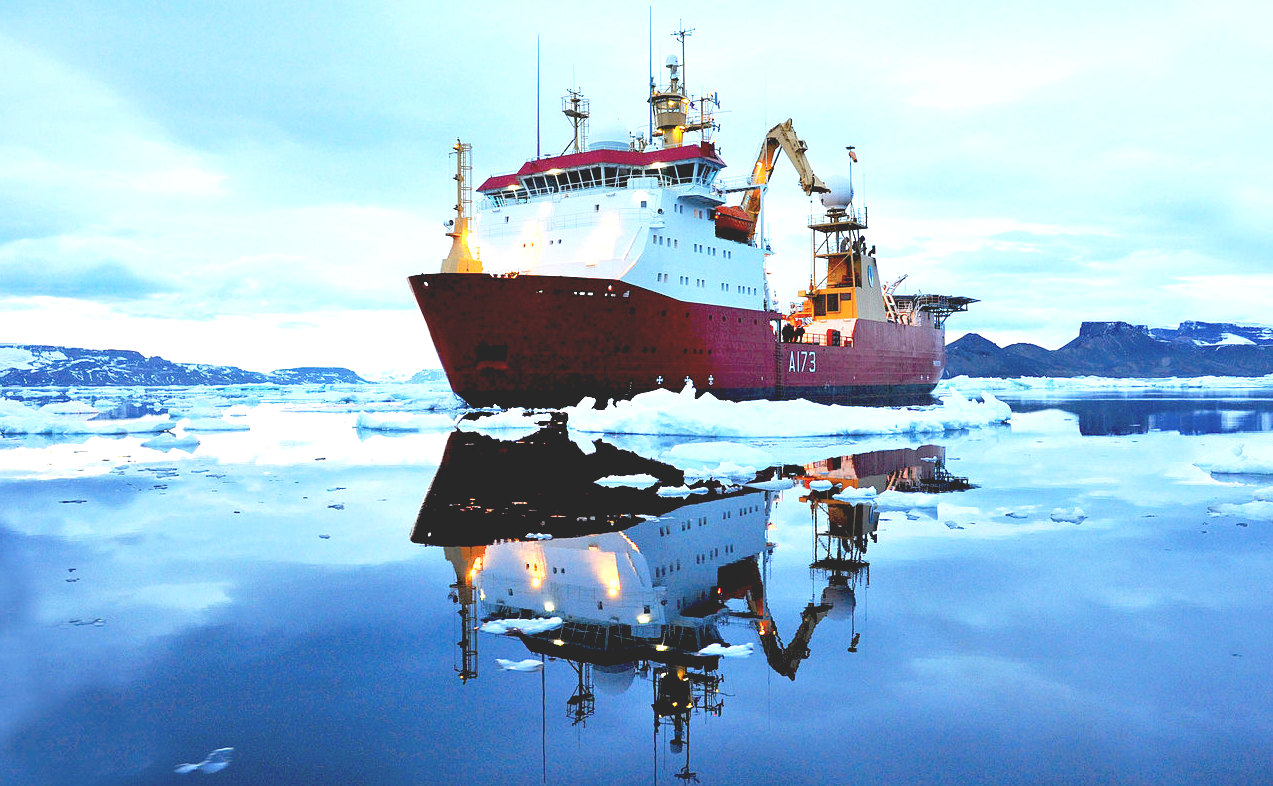
HMS PROTECTOR (A173)
HMS Protector is a Royal Navy ice patrol ship built in Norway in mid 2000. As MV Polarbjørn (Norwegian:
polar
bear) she operated under charter as a polar research icebreaker and a subsea support vessel. In 2011, she was chartered as a temporary replacement for the ice patrol ship HMS Endurance and was purchased by the British Ministry of Defence in early September 2013. As DNV Ice Class 05 the vessel can handle first year ice up to 0.5 metres (20 in).
From April 2011, she was chartered to the Royal Navy for three years as a temporary replacement for the ice patrol ship, HMS Endurance, and was renamed HMS Protector. The annual cost of the charter was £8.7m. In September 2013 the British Ministry of Defence purchased the ship outright from GC Rieber Shipping, for £51 million. In October 2013 the Ministry of Defence announced that from 1 April 2014 the ship's homeport would change from HMNB Portsmouth to HMNB Devonport, the location of the Hydrography and Meteorology Centre of Specialisation and where the Royal Navy's other survey ships are based.
She was commissioned into the Navy on 23 June 2011 as HMS Protector. The commissioning ceremony was held on the 50th anniversary of the date that the Antarctic Treaty came into force. During September 2011, Protector embarked on operational sea training in preparation for her first deployment in November.
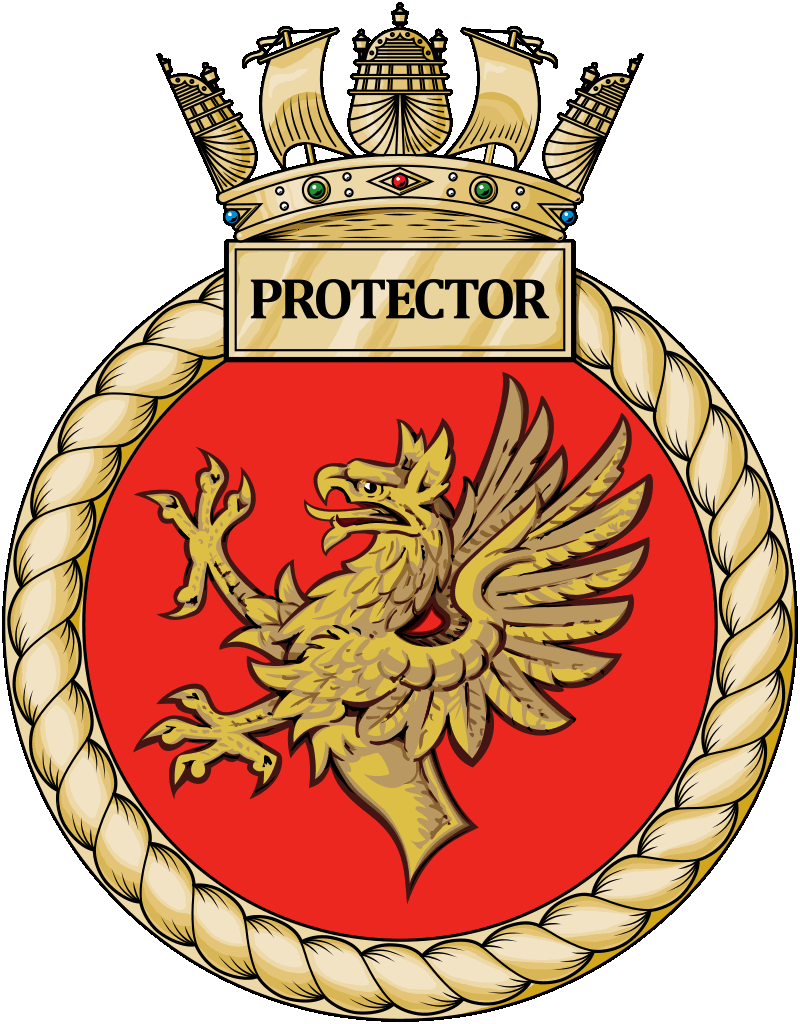
In February 2012, after receiving a distress call from Comandante Ferraz Antarctic Station on King George Island in the South Shetland Islands, Protector sailed to provide assistance to the Brazilian research station after a large fire had broken out there. 23 of her sailors were put ashore with fire-fighting equipment to tackle the blaze. Two of the researchers died in the incident.
During March and April 2012, the ship operated in the vicinity of Rothera Research Station. During a major visit, she delivered around 170 cubic metres of aviation fuel. At 67° 34′ S, this was the most southerly visit of her career up to that date, nearly 800 miles (1,300 km) from Cape Horn, the southernmost tip of the South America. The crew competed in a 'winter Olympics' with scientists from the British Antarctic Survey.
On the way to her second Antarctic deployment, in October 2012 Protector surveyed the wreck of the Dale-class oiler RFA Darkdale in James Bay, Saint Helena, as part of an assessment of its possible threat to the island's environment. On arriving in Antarctica in December, her designated Antarctic Treaty Observers supported an international team carrying out inspections of research stations to ensure compliance with the
Antarctic
Treaty.
The ship left for her third Antarctic deployment in October 2013. She revisited Rothera and then sailed across Marguerite Bay, reaching a latitude of 68° 12′ S, 850 miles (1,370 km) from Cape Horn.
In the northern summer of 2014, the ship visited the Caribbean to perform training for humanitarian assistance, and also assisted some community projects in the British Virgin Islands.
In late 2015, Protector commenced a 20-month deployment to the Ross Sea for fisheries patrol and hydrographic survey operations. It is the first time that a Royal Navy or British Government vessel has operated in the waters south of Australia and New Zealand since 1936. In addition to the ship's usual equipment, three unmanned aerial vehicles (designed and 3D printed by the University of Southampton) were embarked. Sailing from Devonport, Protector visited the Seychelles and Diego Garcia en route (in the latter instance, becoming the first Royal Navy surface ship to visit in eight years) before proceeding to Tasmania, Australia. At the start of December, Protector departed from Hobart, Tasmania to commence
fisheries patrols. In January 2016, the ship completed a five-week patrol of the Ross Sea conducting inspections in support of the Convention for the Conservation of Antarctic Marine Living Resources, with the aid of six embarked Australian and New Zealand specialists. The ship visited Zucchelli Station and reached a latitude of 77° 56′ S. Crew members visited Scott's Hut at Cape Evans. Protector circled the globe, covering more than 18,500 nautical miles, in 2016.
In November 2017, following a request for assistance from the Argentine government, Protector was redeployed to aid international efforts to locate the missing submarine ARA San Juan.
In 2020 crew from the ship were trained aboard Canadian Coast Guard vessels in Arctic waters and renewed cooperation again in 2021.
Protector operates several small boats, including the survey motor boat James Caird IV, the ramped work boat Terra Nova and two Pacific 22 RIBs Nimrod and Aurora. She also embarks three BV206 all-terrain vehicles and a number of quad-bikes and trailers for activities on Antarctica, such as moving stores and equipment.
James Caird IV is a 10.5-metre (34 ft), ice-capable survey motor boat built by Mustang Marine in Pembroke Dockyard, based on a design of existing British Antarctic Survey boats. It has a crew of five, plus up to five passengers. The boat was named by Alexandra Shackleton, the granddaughter of Antarctic explorer
Ernest
Shackleton, during the commissioning ceremony for Protector on 23 June 2011. The boat's name commemorates the voyage of the James Caird made by Shackleton in 1916.
Subsequently, it was reported that Protector would carry at least one of the new 11-metre survey module variants of the Sea-class work boats being procured for various tasks in the Royal Navy.
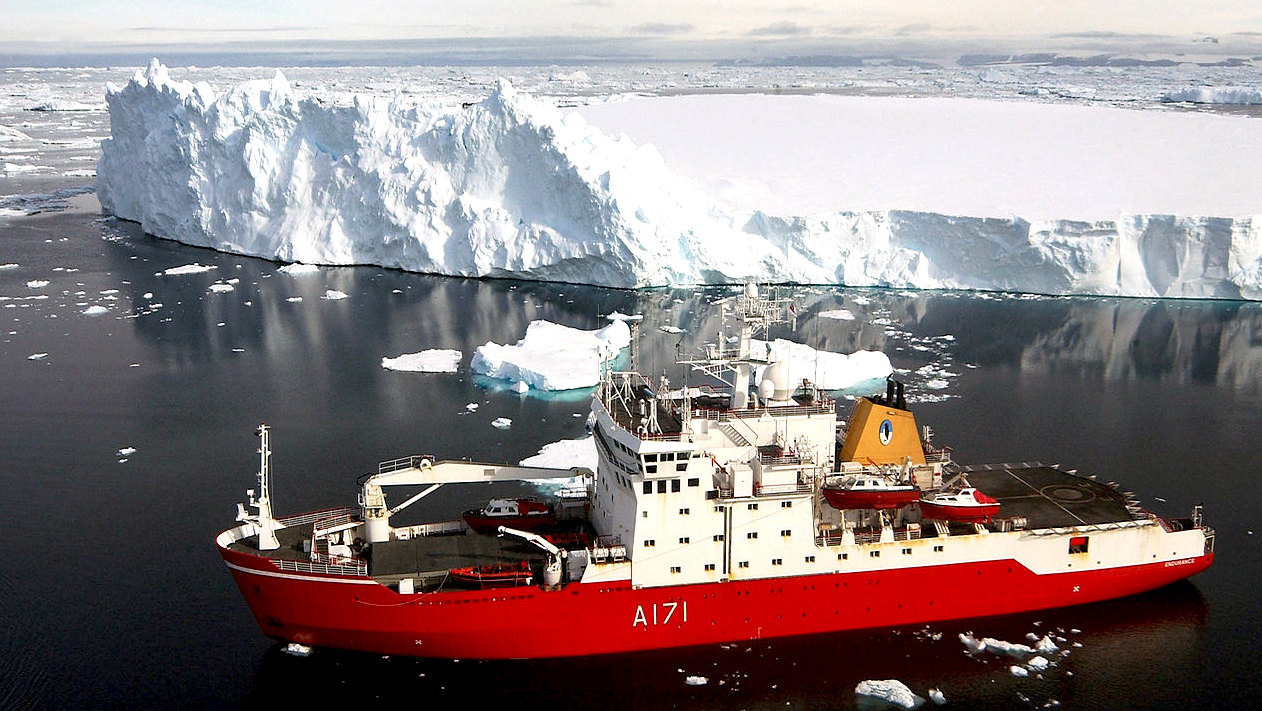
HMS ENDURANCE
HMS Endurance was an icebreaker that served as the Royal Navy ice patrol ship between 1991 and 2008. Built in Norway as MV Polar Circle, she was chartered by the Royal Navy in 1991 as HMS Polar Circle, before being purchased outright and renamed HMS Endurance in 1992 as a replacement for the previous HMS Endurance whose hull had been weakened by striking an iceberg.
Endurance was a class 1 icebreaker. Her two Bergen BRG8 diesel engines produced over 8000 shaft horsepower enabling her to travel through ice up to 1 metre (3 ft 3 in) thick at 3 knots (5.6 km/h). Her propulsion system used a
computer-controlled variable-pitch
propeller and stern and
bow
thrusters. She carried two ice-modified Lynx helicopters which were instrumental in the making of the
BBC Documentary Series
Planet Earth in 2006.
The ship was laid up in Portsmouth from 2009 to 2016, following serious damage caused by flooding following an error during routine maintenance on a sea suction strainer. In October 2013 it was reported that she would be scrapped; in July 2015 the vessel was offered for sale for further use or recycling and left Portsmouth under tow to the Leyal ship recycling facility in Turkey on 1 June 2016.
MV Polar Circle was built in Norway in 1990 by Ulstein Hatlo for Rieber Shipping. The Royal Navy chartered her for eight months as HMS Polar Circle from 21 November 1991. She was bought outright and renamed HMS Endurance on 9 October 1992.
Endurance provided a sovereign presence in polar waters, performing hydrographic surveys and supporting the British Antarctic Survey in Antarctica. Her usual deployment saw her in the
Southern Ocean and returning to the UK through tropical waters each year. Later, a longer, 18-month deployment was designed to maximise her time available for BAS usage.
In 1997, Endurance made the first visit to Argentina by a Royal Naval vessel since the Falklands War, calling at the capital, Buenos Aires, en route to her Antarctic deployment. That she was seen as a scientific and research vessel rather than a warship facilitated the visit and helped to normalise relations between Argentina and the United Kingdom. She visited the Argentinian port of Mar del Plata in 1998 and returned to Buenos Aires in 2002.
In 2005, Endurance was chosen to carry the Queen and the Duke of Edinburgh at the International Fleet Review as part of the Trafalgar 200 celebrations.
In July 2007, the United Kingdom offered Endurance to supply Argentina's Antarctic bases after their ARA Almirante Irizar icebreaker suffered extensive damage in a fire.
Although she enjoyed a varied, purposeful career as the UK's sole ice patrol vessel, Endurance's later years were problematic and ended in ignominy. After her 2004 docking period in Falmouth, the ship suffered a minor accident which resulted in her listing badly when the drydock she was situated in flooded up. The months after the refit were troublesome and the ship suffered numerous debilitating machinery failures. This was to become something of a theme over the next four years as the ship's crew struggled to keep her serviceable, set against more demanding challenges.
Docking in Puerto Belgrano 2006
During survey work in Antarctica in January 2006, the ship's engineering staff discovered that her rudder was apparently loose on the stock. Her work period was cut short and she returned to Mare Harbour in the Falkland Islands for further inspections. Det Norske Veritas, the ship's assurance certification company, instructed that the ship should dock at the nearest available port – the nearest large enough being Puerto Belgrano, Argentina's largest naval base, where Endurance docked in mid-March 2006.
Without hotel services on board, the ship's company moved to shore-side accommodation in the city of Bahía Blanca, some twenty kilometres west of Puerto Belgrano. The rudder was removed for repairs, and once it was on the floor of the drydock, a dockers' strike followed. The ship remained there for nearly three weeks. Picket lines formed at the gates of the naval base, preventing the ship's company from relieving the stranded duty watch on board.
When the strike broke, the rudder was replaced and welded into position and the ship left Puerto Belgrano in early April 2006. She returned to Portsmouth via Lisbon and to drydock again for further engineering work on the rudder and stock.
2008 near loss
In December 2008, while on an 18-month deployment, Endurance suffered extensive flooding to her machinery spaces and lower accommodation decks resulting in the near loss of the ship. A serious engine room flood left her without power or propulsion, and she was towed to Punta Arenas by a Chilean tug. After an extensive survey was completed, the estimates to refit the ship were put at around £30m. On 8 April 2009 Endurance arrived off Portsmouth, on the semi-submersible transporter ship MV Target.
The Royal Navy inquiry found that the flood happened while a sea-water strainer was being cleaned, in an attempt to improve the production of fresh
water. The air lines controlling a hull valve were incorrectly reconnected, resulting in the valve opening and an inability to close it. The pipe installation fell below generally accepted standards, which made reconnection of the air lines ambiguous.
The inquiry also found that, due to manpower constraints, the ship did not have a system maintainer and that clarity of engineering command had been lost, with no-one clearly in charge of risk-management. It was fortunate that, without propulsion, Endurance had drifted over an area shallow enough for anchors to be let go and to hold the ship in position, otherwise, "there was a very real possibility that she would have been lost either by running ashore or by succumbing to the flood." The inquiry judged that the ship's company responded well to control damage in challenging conditions.
Ice Patrol (TV series)
In 2009, National Geographic Channel ran a four-episode documentary series on Endurance. Five ran the same series the following year under the name Ice Patrol, with the final episode showing what happened the day the ship almost sank.
Replacement
On 9 September 2010, speculation in the press suggested it was likely that Endurance would be scrapped and replaced with another icebreaker from Norway.
On 22 March 2011, it was announced that the Royal Navy intended to hire MV Polarbjørn, to be renamed HMS Protector, for three years whilst a final decision on whether to repair or scrap Endurance is made. HMS Protector was purchased in September 2013.
It was announced on 7 October 2013 that Endurance would be sold for scrap, as it was not 'economically viable' to repair the damage sustained in 2008. In July 2015 the Ministry of Defence gave advanced notice of sale of the vessel for further use or recycling, noting that "parties interested in acquiring the vessel for future use should note it will require considerable investment". The vessel left Portsmouth under tow to the breakers' yard in Turkey on 1 June 2016.
SIR ERNEST SHACKLETON
Endurance was named after the ship which Sir Ernest Shackleton used in his Antarctic expedition of 1914–1917. The names of Endurance's boats and landing craft continued the Shackleton connection: James Caird and Dudley Docker were named after boats carried by Shackleton's
HMS
Endurance, Nimrod was named after the ship which Shackleton used on his Antarctic expedition of 1907–1909, and Eddie Shackleton was named after the explorer's son. The motto of Endurance, "fortitudine vincimus" ("by endurance, we conquer"), was also the Shackleton family motto.
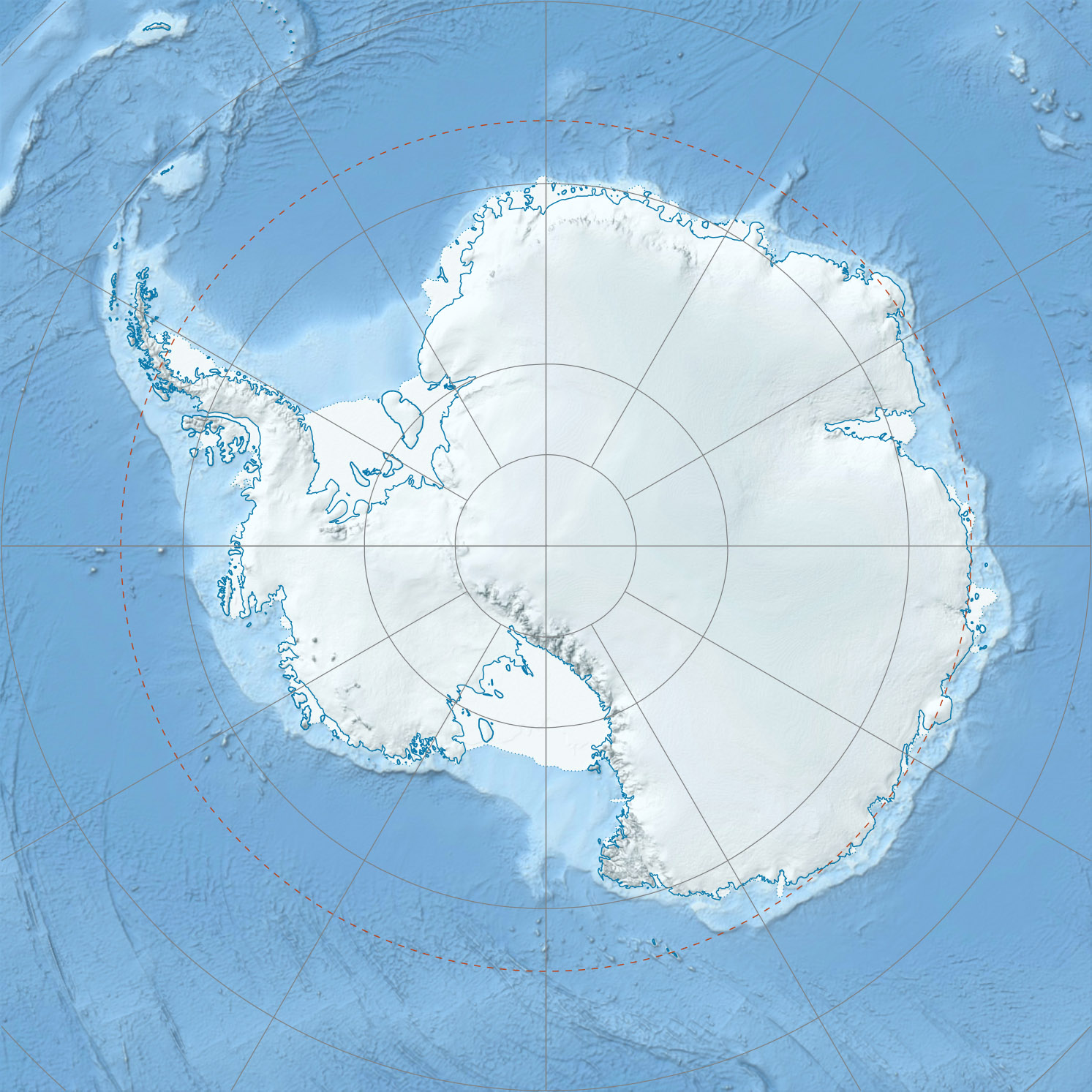
Antarctica
is surrounded by the Southern Ocean










